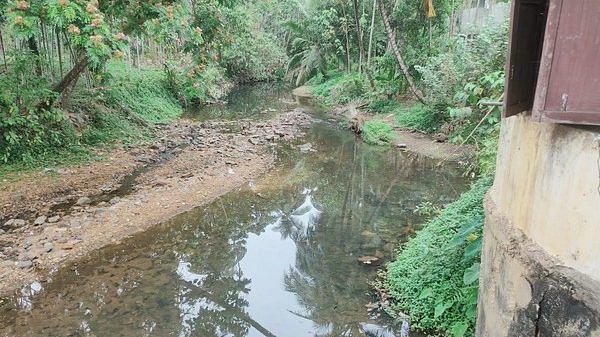Your Turn is a unique section from ThePrint featuring points of view from its subscribers. If you are a subscriber, have a point of view, please send it to us. If not, do subscribe here: https://englishdev.theprint.in/subscribe/
This opinion piece delves into the crisis, proposing a transformative path forward through enforced transitions, alternative strategies, and a rallying call for collective responsibility.
In the sprawling urban landscapes of India, a silent menace lurks beneath the surface, threatening the very fabric of our cities. The recent assessment by the Central Pollution Control Board shows that a staggering 72,368 Million Liters per Day (MLD) of sewage was generated in urban centers for the year 2020-21. But what concerns us is clogged open sewage drains silently wreaking havoc on public health, the environment, and the overall liveability of our urban spaces.
Understanding Sewage System and its Problems
Sewage systems are of two types based on how the sewage is collected, stored, transported, and disposed of (according to NITI Aayog’s Urban Wastewater Scenario in India).
First, is the Off-Site System where the wastewater is collected and transported either for disposal or for treatment through a network of sewers in two ways either through a separate system that collects sewage and stormwater in separate drains or a combined system that collects sewage and stormwater together in the same drain. Second, is the On-Site System which stores and treats sewage within the premises of its generation and is also termed non-sewered sanitation.
In India, 60% of the population relies on on-site sewage management systems. However, most of the urban areas are designed for a separate off-site system where the sanitary sewage from the households is meant to be transported through a separate underground network, and the stormwater is meant to be transported through the open drains.
Nevertheless, many urban households to date are not connected to this underground network and dispose of their sewage waste in the open drains or still have an on-site system. The condition of these open drains is further exacerbated by inadequate waste disposal practices (disposing of non-biodegradable solid wastes), illegal encroachments and constructions on existing drains, poorly designed networks with reverse slopes, irregular maintenance, and insufficient capacity due to increasing populations, each factor contributing to the impending catastrophe.
A Symphony of Consequences
The impacts are manifold, affecting every aspect of urban life. Public health is at risk, with clogged drains serving as breeding grounds for disease vectors. Waterborne diseases such as dengue, malaria, and cholera become all too common, while contamination of drinking water sources poses a severe threat to the well-being of our communities. Accidents and injuries caused by slippery streets and open sewage drains become a part of daily life.
The environment, too, bears the brunt. Pollution, urban flooding, and soil contamination become synonymous with clogged drains, disrupting ecosystems, and jeopardizing the delicate balance of our surroundings. Infrastructure also suffers, with road and building damage becoming pervasive. Aesthetic and liveability concerns plague residents, as foul Odors and reduced property values cast a shadow over once-vibrant neighborhoods.
A Path Forward
Yet, amidst the gloom, there is hope. Solutions exist, and it’s time for a paradigm shift in our approach to sewage management.
Transitioning to a separate underground sewage system with two separate networks, one for sanitary sewage from the households and the other for the stormwater collected from the top covered drains which does not allow any disposal of solid wastes is not merely a suggestion but a dire necessity. Enforcing this transition comes with many advantages – minimized pollution, more effective wastewater treatment, reduced flooding risks, targeted maintenance efforts, and protection against combined sewer overflows.
The implementation strategy is clear by formulating regulations, raising public awareness, planning infrastructure meticulously, executing the transition in phases, enforcing adherence, and continuously evaluating the system’s effectiveness.
But there are alternatives worth considering. Increasing the volume of open sewers and installing debris collectors may offer localized relief. A community-driven approach, empowering residents to take charge of waste disposal, is another avenue. Perhaps, the most effective solution lies in a combination of these alternatives – a holistic approach that integrates separate sewage systems, community engagement, and localized solutions.
A Call for Collective Responsibility
The battle against clogged open sewage drains is not the sole responsibility of municipal bodies or government agencies. It’s a call to action for every citizen, every community, and every sector. Technological integration, policy alignment, continuous evaluation, community empowerment, and collaboration between the government and private sector are vital components of the solution.
In the face of this urban crisis, we must recognize that our cities are interconnected ecosystems. A resilient and sustainable future demands shared responsibility and collective action. Let us not allow our cities to drown in the consequences of neglect. It’s time to unclog India’s urban future – a future where clean, efficient sewage systems lay the foundation for healthier, happier, and more vibrant cities.
These pieces are being published as they have been received – they have not been edited/fact-checked by ThePrint.


